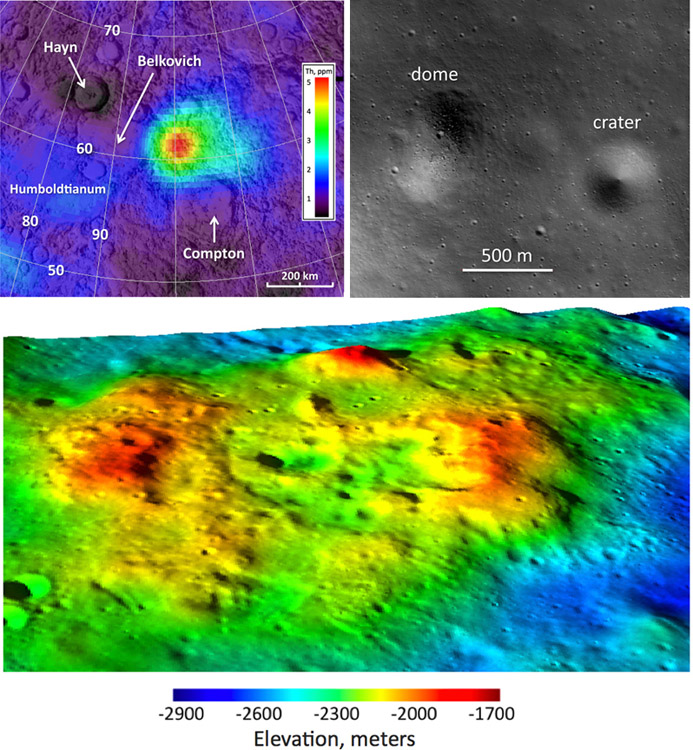July 26, 2011
Silica-Rich Domes And Caldera

images from Nature Geoscience by way of " rel="nofollow Space.com
Nearly all lunar volcanic eruptions produced mare basalts that fill nearside basins and the floor of the farside South Pole-Aitken Basin. Very little evidence for volcanism exists in the lunar highlands. Now Brad Jolliff and colleagues have " rel="nofollow published new information from LRO documenting a likely volcanic landform at the famous Compton-Belkovich " rel="nofollow thorium anomaly (top left). LRO images reveal several domes (top right) said to be steeper than typical mare domes, which hints at a more silica-rich composition than mare basalts. Terrestrial volcanologists have learned that even basalts can make steep slopes if their rate of eruption is low, but this is apparently not the case for these domes because the LRO's Diviner infrared radiometer identified high silica content as in rhyolite rocks. The same spectral signature is found is a rough ring of low mountains enclosing a lower area (bottom). Brad's team interprets this as a silica-rich caldera, I think the first found on the Moon. This silicic volcanic province is very near mare basalts on the floors of Compton and the Humboldtianum Basin. This is similar to the " rel="nofollow Gruithuisen Domes being near Oceanic Procellarum basalts - I wonder if there are connections betweem these silicic and basaltic features? Finally, this Compton-Belkovich Volcanic Province (CBVP) may be just visible from Earth, as is the central peak and rim of Compton. The caldera rim is lower than the central peak but the silicic-rich volcanics are bright - are they detectable? Should this be L101?
" rel="nofollow Chuck Wood
Update
The LROC " rel="nofollow site has an image of the CBVP and a dramatic low Sun image of one of the domes showing that it must have a slope greater than 13°!
Related Links
Clementine Atlas Plates 15 & 16



